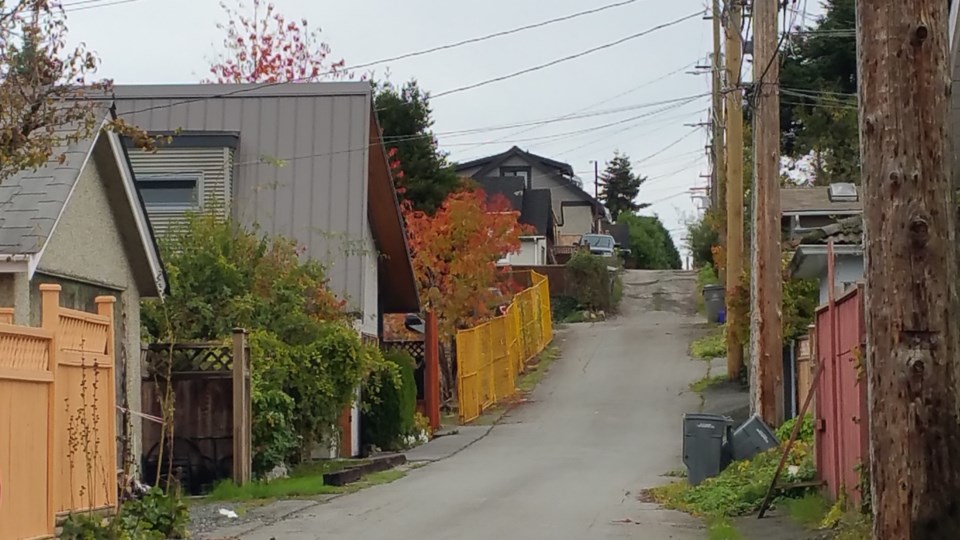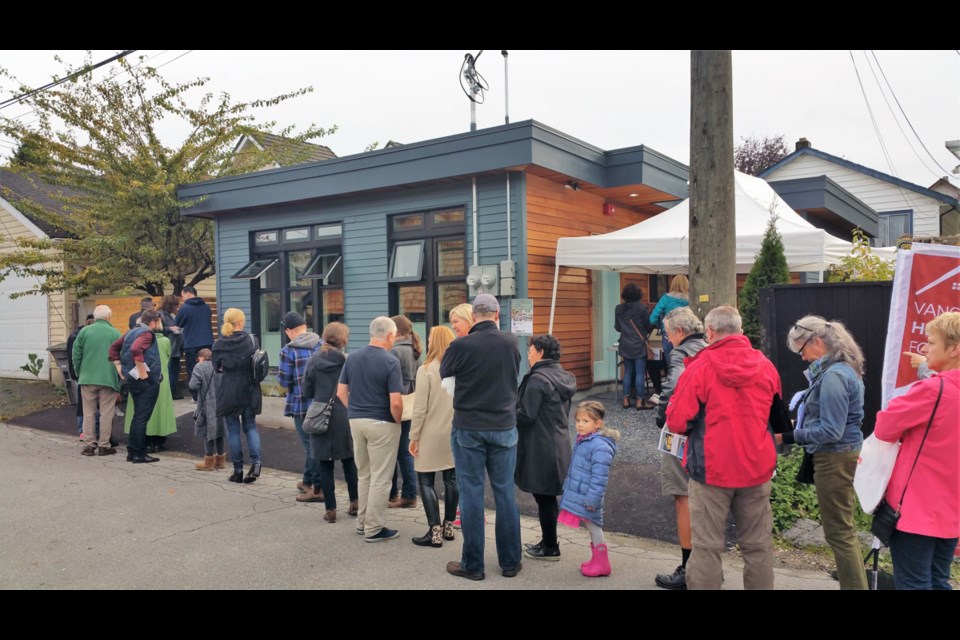I recently spent my afternoon wandering the back lanes of Vancouver. I was not alone.
I was joined by a broad cross section of Vancouver residents participating in Vancouver’ Heritage Foundation’s (VHF) 7th annual Laneway Housing Tour.
Living on a lane is not a new idea in Vancouver. But it has gained popularity since 2009 when laneway housing was formally approved by the Vision-led council, following its introduction as part of the NPA’s EcoDensity initiative.
VHF promotes laneway houses since they are a way to help preserve older character houses. This year’s tour included houses spread across the city, including an infill house constructed behind the historic Chan house in Strathcona.
Some Courier readers may recall I wrote about a VHF laneway tour two years ago in a column called, “City of Vancouver laneway homes should be sellable.”
I noted that while laneway houses can only be rented under Vancouver’s zoning bylaw, many are being built for family members who would like to own their home.
Fortunately, innovative financial institutions such as Vancity were assisting them through ‘tenants-in-common’ legal agreements and other complex legal structures.
However, it was my hope that the current council, or a future council will allow some laneway houses to be sold through a bare-land strata subdivision or strata title arrangement. One approach might be to start with laneway houses on corner lots.

While I have been a supporter of laneway housing for more than 40 years, in the past I was critical of Vancouver’s program since the design guidelines tended to encourage two level, rather than single level homes. Homeowners and builders were also designing garages with in-floor heating and large windows (and even French doors) to be converted to living space once the city inspector had gone.
My concern was that this would ultimately lead to on-street parking congestion, which might threaten the program.
Fortunately, the city has modified its design and parking guidelines and this year’s tour included two single-level homes.
However, from talking to some builders, I discovered there remain numerous complaints about the program.
For example, the city allows laneway houses on properties that include a basement suite. However, planners will not allow the basement suite patio at the front of the house. Instead, it must open onto the rear, often crowding the outdoor space for the laneway and main houses.
Why?
One builder suggested the reason is nostalgia. The city doesn’t want single-family neighbourhoods to lose their traditional character.
If this is not the reason, I hope someone at city hall will respond. I will tell them how New Westminster is considering a blanket rezoning of single-family neighbourhoods to allow duplex dwellings.
Builders also complained about the application of Vancouver’s ‘accessibility’ standards. While few would disagree with the need to make more housing accessible to those in wheelchairs, it can be very difficult in a tiny two-storey house.
One of the complaints I often hear is how long it takes to get permits in Vancouver. These delays contribute to the cost of housing, and laneway houses appear to be no exception. Despite their small size and often standardized plans, I was told that it generally takes eight months or more to get the necessary permits and another eight months to build.
Surely it is not necessary for permits to take so long. If the reason is that staff are overloaded with applications, I would suggest the city allow ‘certified professionals’ to play a greater role in issuing permits for laneway houses.
One thing that I would ask for, however, is that laneway house designs be required to incorporate space for garbage cans. As I walked down every back lane, garbage cans seemed to dominate the view.
Over time, as more and more laneway houses are built, we should expect laneways to become more attractive, with doors fronting onto nicely paved roads, and improved landscaping and fencing.
While I commend Vancouver for implementing the laneway housing program, this year’s tour taught me further improvements are needed. Hopefully, some of these changes can be made by Vancouver’s new planning regime, before next year’s tour.
If you have been considering a laneway house, go to the city website and search for “Building your laneway house.”
@michaelgeller



